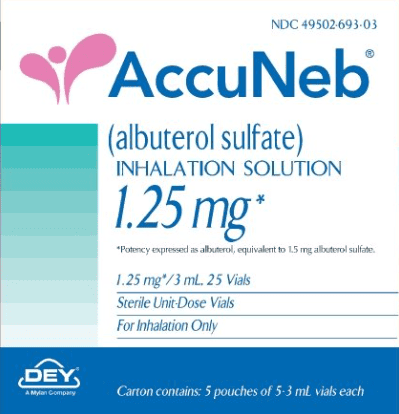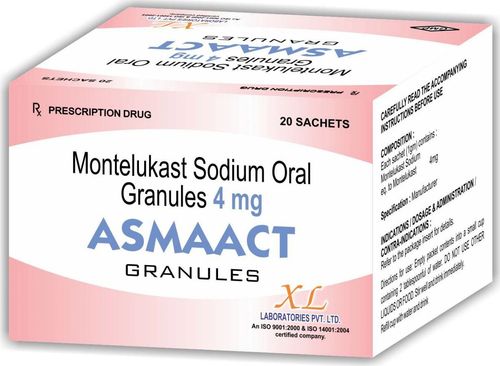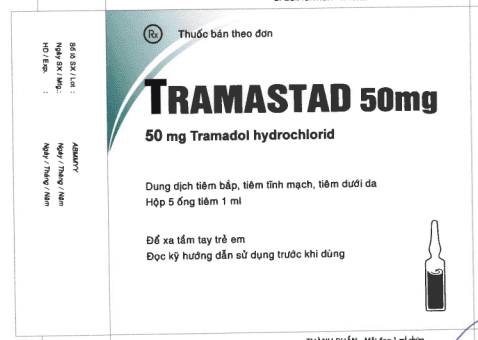This is an automatically translated article.
Aerofor 100 medicine is used to treat asthma with the main active ingredients Budesonide and Formoterol fumarate. The following article shares information on drug use, dosage and uses of Aerofor 100.
1. What is Aerofor 100?
Aerofor 100 belongs to the group of drugs acting on the respiratory tract, which is prepared in the form of an oral inhaler and packaged in a box of 1 inhaler 120 doses.
Aerofor 100 drug includes the main ingredient Budesonide (Micronised) 100mcg/dose and Formoterol fumarate (in the form of Formoterol fumarate dihydrate) 6mcg/dose, and also includes other excipients such as: Sorbitan trioleat, Ethanol, Propellan HFA 134a.
2. Indications for taking Aerofor 100
Aerofor 100 is used in the routine treatment of asthma in the following cases:
The patient is not well controlled with inhaled corticosteroids and short-acting inhaled beta-2 agonists used as needed. The patient was well controlled with inhaled corticosteroids and long-acting beta-2 agonists.
3. Dosage - How to take Aerofor 100
3.1. How to use Aerofor 100 is used 2 times / day in the morning and evening. Here are the Aerofor 100 medication instructions.
Try the Aerofor inhaler before using it for the first time, or use the Aerofor again after more than a week of not using it. Open the protective cap, inspect the mouthpiece, and shake the Aerofor inhaler well. Hold the Aerofor inhaler upright, thumb down, hold the inhaler with one or two fingers. Exhale through your mouth and do not exhale into the mouthpiece of the tube. Place the mouthpiece of the Aerofor inhaler between your teeth and close your lips. Do not chew or bite hard on the mouthpiece. Inhale through the mouth, while inhaling, the patient presses firmly on the Aerofor inhaler to release a dose of the drug, inhale strongly and deeply. Remove the Aerofor inhaler from your mouth. Hold your breath for 10 seconds. Before exhaling, remove the Aerofor inhaler from your mouth. If an additional dose is required, repeat steps 2 to 4. After using Aerofor 100, close the protective cap. The patient should try to exhale as slowly as possible. After inhaling Aerofor, rinse your mouth with water. Do not regret. 3.2. Dosage Dosage is individualized and should be adjusted according to the severity of the disease. The dose of Aerofor 100 should be titrated to the lowest dose that maintains effective symptom control.
Adults (≥ 18 years old): 1-2 inhalations of Aerofor/time x 2 times/day. Some patients may need up to a maximum of 4 inhalations of Aerofor twice a day. Teenagers (12-17 years old): 1-2 inhalations of Aerofor/time x 2 times/day. Children ≥ 6 years old: 1-2 inhalations of Aerofor/time x 2 times/day. Patients should be reevaluated regularly by their physician.
4. Contraindications to using Aerofor 100
Aerofor 100 should not be used in the following cases:
Patients with a history of hypersensitivity, allergy to Budesonide, Formoterol, other beta 2 agonists or any of the ingredients.
5. Aerofor 100 drug interactions
Ketoconazole 200 mg once daily increased plasma concentrations of oral budesonide (3 mg single dose) by an average of 6 times when co-administered. When ketoconazole was administered 12 hours after budesonide administration, mean budesonide concentrations were increased 3-fold. There is no information on this interaction for inhaled budesonide, but studies have suggested a marked increase in plasma concentrations. Patients should avoid taking Aerofor 100 with the above drugs. If this cannot be avoided, the interval between administration of ketoconazole and budesonide should be extended as long as possible. The dose reduction of budesonide should be considered. Other potent CYP3A4 inhibitors also markedly increase budesonide plasma concentrations. Beta-blockers may reduce or inhibit the effects of formoterol. Therefore, the combination of Aerofor 100 with beta-blockers (including eye drops) is not recommended.
Concomitant use with quinidine, disopyramide, procainamide, phenothiazines, antihistamines (terfenadine), tricyclic antidepressants and MAOIs may prolong the QT interval and increase the risk of ventricular arrhythmias.
L-Dopa, L-thyroxine, oxytocin and alcohol can affect the tolerance of the heart to beta-2 sympathomimetic drugs. Concomitant use with MAOIs, including agents with similar properties, such as furazolidone and procarbazine, may promote an hypertensive response. Patients who are insensitive to halogenated hydrocarbons may be at increased risk of cardiac arrhythmias. Hypokalemia may increase the predisposition to arrhythmias in patients treated with cardiac glycosides.
6. Possible effects when using Aerofor 100
Aerofor 100 contains both budesonide and formoterol, patients may experience some unwanted side effects such as:
Headache. Nervous. Respiratory paralysis, oropharyngeal candidiasis, mild throat irritation, cough, hoarseness. Tachycardia, angina attacks, blood pressure fluctuations, extrasystoles, atrial fibrillation, supraventricular tachycardia. Muscle contraction. Agitation, restlessness, nausea, agitation, dizziness, sleep disturbances. Skin rash, ecchymosis, urticaria, pruritus, dermatitis, angioedema Bronchospasm . Hypokalemia. Hyperglycemia Adrenal insufficiency Depression, behavioral disturbances. Taste disorder. Patients should inform their doctor and pharmacist of the unwanted effects encountered when using Aerofor 100.
7. Notes when using Aerofor 100
Aerofor 100 should be used with caution in patients with pheochromocytoma, thyrotoxicosis, diabetes mellitus, hypertrophic obstructive cardiomyopathy, untreated hypokalemia, inferior aortic stenosis idiopathic valve disease, severe hypertension, severe aneurysm or cardiovascular disorders, ischemic cardiomyopathy, severe heart failure.
Use Aerofor 100 with caution when treating patients with hypersensitivity to the drug's components, especially those with hyperthyroidism, tachycardia, bradycardia, arrhythmia, cardiovascular disease such as myocardial ischemia. heart disease, hypertension, thromboembolic disease, hardening of the arteries or aneurysms.
The need and dose of inhaled corticosteroids should be re-evaluated in patients with active or latent tuberculosis, respiratory viral and fungal infections.
Particular caution should be exercised in patients with unstable asthma receiving different doses of bronchodilators, in patients with acute severe asthma.
Serum potassium levels should be monitored during these conditions and glycemic control should be considered in patients with diabetes.
Aerofor 100 has no significant influence on the ability to drive and use machines.
Aerofor 100 is not recommended during pregnancy or lactation, only when the benefits outweigh the risks.
Aerofor 100 can cause arrhythmias, severe hypertension. The lowest effective dose of medication should be used to maintain good asthma (asthma) control.
It has not been accurately reported whether formoterol or budesonide passes into breast milk. Therefore, breastfeeding should be discontinued while the mother is taking Aerofor 100.
Basically, Aerofor 100 drug works in the treatment of asthma. Patients should carefully read the instructions for use and use the drug as directed by the doctor before taking the drug to achieve the best effect.
Please dial HOTLINE for more information or register for an appointment HERE. Download MyVinmec app to make appointments faster and to manage your bookings easily.













